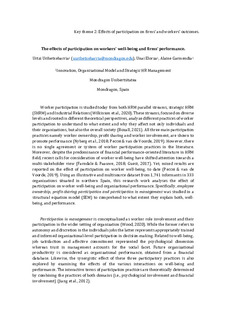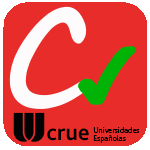| dc.contributor.author | Uribetxebarria, Urtzi | |
| dc.contributor.author | Elorza, Unai | |
| dc.contributor.author | Garmendia, Alaine | |
| dc.date.accessioned | 2025-04-10T07:11:33Z | |
| dc.date.available | 2025-04-10T07:11:33Z | |
| dc.date.issued | 2022 | |
| dc.identifier.other | https://katalogoa.mondragon.edu/janium-bin/janium_login_opac.pl?find&ficha_no=168097 | en |
| dc.identifier.uri | https://hdl.handle.net/20.500.11984/6947 | |
| dc.description.abstract | Worker participation is studied today from both HRM parallel streams, strategic HRM (SHRM) and Industrial Relations (Wilkinson et al., 2020). These streams, focused on diverse levels and rooted in different theoretical perspectives, analyze different practices of worker participation to understand to what extent and why they affect not only individuals and their organizations, but also the overall society (Boxall, 2021). All three main participation practices namely worker ownership, profit sharing and worker involvement, are shown to promote performance (Nyberg et al., 2018; Peccei & van de Voorde, 2019). However, there is no single agreement or system of worker participation practices in the literature. Moreover, despite the predominance of financial performance-oriented literature in HRM field, recent calls for consideration of worker well-being have shifted attention towards a multi-stakeholder view (Farndale & Paauwe, 2018; Guest, 2017). Yet, mixed results are reported on the effect of participation on worker well-being, to date (Peccei & van de Voorde, 2019). Using an illustrative and multisource dataset from 1,741 informants in 333 organizations situated in northern Spain, this research work analyses the effect of participation on worker well-being and organizational performance. Specifically, employee ownership, profit-sharing participation and participation in management was studied in a structural equation model (SEM) to comprehend to what extent they explain both, well-being, and performance. | en |
| dc.language.iso | eng | en |
| dc.title | The effects of participation on workers’ well-being and firms’ performance | en |
| dc.type | http://purl.org/coar/resource_type/c_c94f | |
| dcterms.accessRights | http://purl.org/coar/access_right/c_abf2 | en |
| dcterms.source | International Association for the Economics of Participation (IAFEP) | en |
| local.contributor.group | Innovación, gestión, organización | es |
| local.description.peerreviewed | true | en |
| local.source.details | 11. Montpellier, 6-8 July 2022 | en |
| oaire.format.mimetype | application/pdf | en |
| oaire.file | $DSPACE\assetstore | en |
| oaire.resourceType | http://purl.org/coar/resource_type/c_c94f | en |
| oaire.version | http://purl.org/coar/version/c_ab4af688f83e57aa | en |







